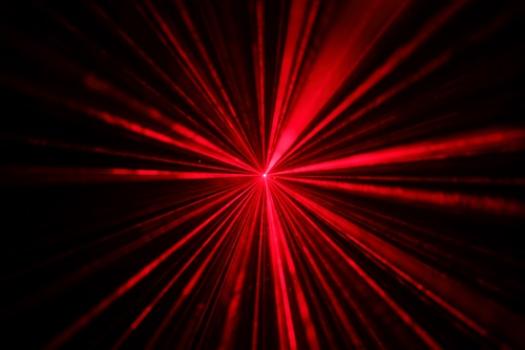VCSELs: beyond red

When it comes to VCSELs, GaAs is the leading light, but GaN and InP devices are now gaining market share, reports Compound Semiconductor.
850 nm GaAs devices have dominated the VCSEL market but longer wavelength devices are making in-roads to new applications.
While high power vertical-cavity surface emitting lasers have been under development for more than fifteen years, only now is the technology truly set to rival alternative technologies in a range of applications.
GaAs VCSELs, emitting at 850nm, have long-served as the workhorse of the datacommunications industry, providing optical data links for distances of a few hundred metres. But now the GaAs VCSEL as well as longer wavelength GaN and InP devices, are making in-roads into myriad applications with the global market set for double-digit growth.
A recent market forecast from BCC Research predicts VCSEL markets will be worth some $2.1 billion come 2018, representing a five-year compound annual growth rate of 33.1%. Analogue broadband signal transmission and absorption spectroscopy market segments are predicted to each hit the highest CAGRs - just over 37% - while optical fibre data transmission is forecast to attain a 31.2% CAGR over the same five years.
For now the GaAs VCSEL is expected to remain dominant. BCC's 2012 figures reveal GaAs grabbed a little more than 80% of the VCSEL market, with InP taking 13%, GaN only 1% and other materials making up the remainder.
As BCC photonics analyst, Gaurav Bhushan, explains: "GaAs VCSELs are witnessing proliferating growth in advanced sensing applications that are anticipated to fuel the next wave of innovation in consumer products including tablets, cell phones and other handheld devices."
Gesture recognition with 3D sensing is a crucial and growing market for the technology. Earlier this year, IQE delivered the first 6 inch VCSEL epiwafers for high volume, low cost applications, citing gesture recognition for gaming and non-contact navigation in smartphones and tablets, as well as depth imaging for 3D vision in handsets as key markets.
In a gesture recognition system, light from an infrared source is passed through an optical element to spread the light into a light sheet, so sensors can capture depth information across, say, an entire room, by measuring light reflected from its objects.
Such a system demands high power and precision, which is where the VCSEL comes into its own. Distributed feedback lasers, for example, are relatively low power, so the gesture recognition system would require several of these edge emitters. Meanwhile the LED, while cheap, cannot be modulated quickly, limiting resolution and increasing power consumption.
In contrast GaAs VCSELs offer optical efficiency within a small footprint, and come at a low cost. "VCSELs have already replaced edge emitters and LEDs in lower power applications, thanks to lower cost, beam quality and high reliability," says Gaurav.
Critically, all-vertical construction - VCSELs are top-side emitting - enables the use of existing semiconductor manufacturing infrastructure, keeping fabrication costs down. As Gaurav says: ""VCSELs are proposed to be ten times lower cost than edge emitters for these applications... due to chip-like manufacturing and simple packaging techniques."
Longer wavelengths
But it's no longer all about short-wavelength emission. According to Gaurav, blue and green VCSELs, based on InGaN, are beginning to fuel small photonics device markets, such as laser pico-projectors, and will find use in laser printers, high density and high speed optical discs as well as full colour displays.
"In the past, GaN-based LEDs and edge emitters have proved a great success," he says. "But with numerous advantages, such as lower manufacturing costs, single longitudinal mode emission, circular and low-divergence output beam, wafer-level testing, longer lifetime [and more], VCSELs have the edge."
Similarly InP-based VCSELs look set to, at long last, gain commercial recognition. While the first lasing operation of a VCSEL was demonstrated on InP-based materials as early as 1979, GaAs-based VCSELs soon reigned supreme. Low gain, poor temperature performance and difficulties in fabricating a DBR to lattice match InP - to name but a few problems - stymied InP VCSEL development.
But while today's technologies still demand complex and expensive manufacturing processes, change is afoot with the development of so-called high contrast gratings; subwavelength gratings with a large refractive index contrast. These can be fabricated for a range of optical structures including broadband mirrors for InP VCSELs, making the technology viable as a tunable light source in wavelength division multiplexing systems in fibre-to-the home and data centre applications.
"Due to very high manufacturing costs, the InP-based VCSEL has not impacted the market, and its market share is very low compared to GaAs-based VCSELs," he says. "But the introduction of high contrast gratings... means InP can now be used as an alternative and preferred material to GaAs."
Still, Gaurav is adamant GaAs will retain largest market share. "Designing a device structure that can be manufactured with as low cost as the 850 nm GaAs-based VCSELs is still a major challenge for the rest of the industry," he adds. "GaAs is expected to lead the market in the near future."































